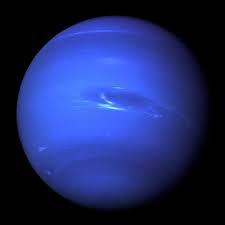What are the features of planet Neptune?« Back to Questions List
|
Neptune is the eighth planet of the solar system. The last planet in the system appears as a beautiful blue ball in the photographs taken by space probes. The planet was discovered in 1612 by a small telescope by Galileo. But he is not credited with the discovery as it was not identified as a planet at that time. Mathematical calculations led to discovery of the planet in 1846. John Couch Adams and Urbain Le Verrier independently calculated the possible planetary orbit and planet’s position. In 1846, Johann Galle discovered the planet exactly where it had been predicted. The remotest planet is the fourth largest among all planets by diameter and the third by mass. The planet is an ice giant. It is situated at a distance more than thirty times as far from the sun as Earth is. Neptune completes one rotation every 16 hours and 7 minutes. It completes one revolution around the sun in 165 earth years which is almost twice the time taken by Uranus. In composition, Neptune is similar to Uranus. The planet is a thick soup of water, ammonia and methane over an earth sized, solid centre. Atmosphere of the planet is composed of hydrogen, helium and methane. The presence of methane gives Neptune the same blue colour as Uranus. The planet has six rings, but they are very hard to see. Of the several moons of Neptune, fourteen natural satellites have been identified so far. Triton and Nereid are the most famous among the moons. Triton with a temperature of minus 235 degrees Celsius is one the coldest places recorded. The lowest possible temperature in Universe is estimated to be minus 272 degrees Celsius. Triton revolves in the unusual wrong way from east to west. It is believed that this moon was not formed in the natural way, but was captured into the planet’s orbit by Neptune’s gravity. The planet Neptune is the windiest planet in the solar system. It has a tumultuous climate with hurricane winds of up to 2000 km per hour. There are many storm systems in the planet and one of them is the size of the earth and is named the Great Dark Spot. This was discovered by Voyager 2 space craft. After five years it was spotted, the Hubble Space Telescope failed to locate the Great Dark Spot again. Instead it found a new storm.
Voyager 2 could come within 4,400 kilometres of the atmosphere of planet on August 25, 1989. Future mission envisaged is Argo in 2019 with visits to Jupiter, Saturn, Neptune and a Kupier belt object. Planet Venus – Twin of Planet EarthMars- The Red Planet
|

